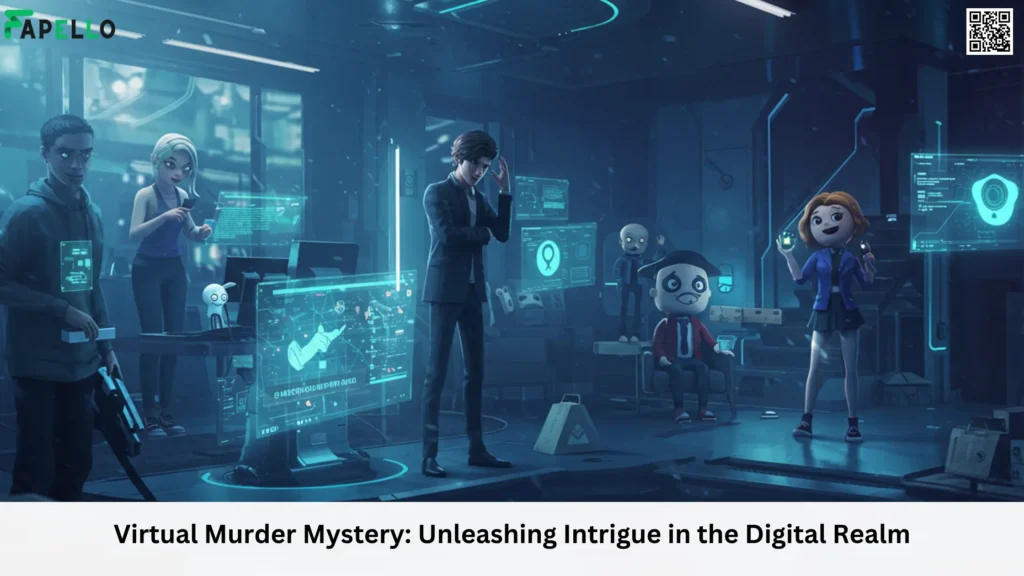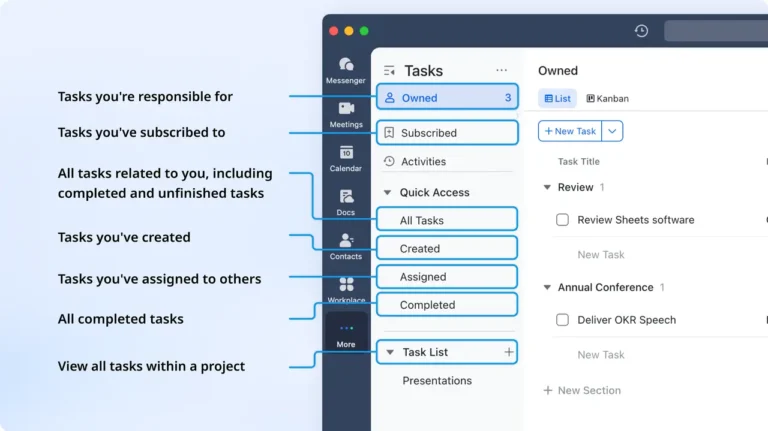In an era defined by digital connectivity and remote engagement, a virtual murder mystery has emerged as one of the most captivating forms of online entertainment. Combining the immersive storytelling of classic whodunits with the convenience of video conferencing and interactive platforms, virtual murder mysteries bring friends, family, and colleagues together for an unforgettable sleuthing experience—no matter where they are in the world.

What Is a Virtual Murder Mystery?
A virtual murder mystery is an interactive event in which participants assume the roles of suspects, detectives, or witnesses in a fictional crime scenario played out entirely online. Through a combination of live video, chat features, pre-recorded clues, and digital documents, players collaborate (or sometimes compete) to unravel the mystery, identify the culprit, and piece together the motive and method of the crime. Unlike traditional tabletop games or in-person dinner theater, everything unfolds on screens, making it accessible to anyone with an internet connection.
The Rise of Online Interactive Entertainment
Over the past decade, digital platforms have revolutionized how people socialize, work, and play. As video calls and collaboration tools became ubiquitous, creative hosts began to leverage these technologies for entertainment. The global events of recent years accelerated this trend: lockdowns and social distancing transformed virtual gatherings from novelty to necessity. In that landscape, virtual murder mysteries thrived—offering structured, narrative-driven social events that felt fresh and engaging compared to passive streaming or isolated gaming.
Key Components of a Virtual Murder Mystery
While formats vary, most virtual murder mysteries share core elements:
- Storyline and Setting: A compelling plot with a clear crime, timeline, and intriguing characters provides the backbone. Themes range from 1920s speakeasies to futuristic space stations.
- Character Profiles: Participants receive dossiers outlining their personas, backgrounds, objectives, and secret information. These profiles guide their behavior and interactions.
- Clue Delivery: Hosts distribute evidence—photos, video clips, audio recordings, digital documents—at scheduled intervals or in response to player discoveries.
- Facilitation: A game master (or automated host) moderates the flow, reveals hints, enforces timing, and ensures everyone stays on track.
- Investigation and Interaction: Players interrogate each other, share (or conceal) information, and collaborate to piece together the narrative.
- Reveal and Resolution: After discussion, participants submit accusations or vote for the suspect, followed by the dramatic unveiling of the truth.
Choosing the Right Platform and Format
Selecting the appropriate technology is crucial. Popular options include:
- Video Conferencing Software: Zoom, Microsoft Teams, and Google Meet allow for breakout rooms—ideal for private discussions among suspects.
- Dedicated Murder Mystery Platforms: Web-based systems like Night of Mystery or My Mystery Party offer built-in hosting tools, clue distribution, and character management.
- Hybrid Solutions: Some hosts pair a video call with collaborative whiteboards (Miro, Mural) or chat-based interfaces (Discord) for document sharing and side-channel communications.
Hosts must consider participant count, technical proficiency, budget, and desired level of automation when choosing a platform. A seamless experience with minimal setup encourages engagement and reduces frustration.
Crafting the Storyline and Characters
At the heart of any murder mystery lies a well-crafted narrative. Writers should:
- Define the Crime: Determine who was killed, how, and why. Even fantastical scenarios benefit from a logical underpinning.
- Map the Timeline: Outline events leading up to the murder, including character movements, relationships, and opportunities.
- Develop Character Backstories: Provide motivations, secrets, and personal stakes. Rich, multidimensional personas encourage immersive role-play.
- Balance Clues: Ensure that evidence is neither too obscure nor overly obvious. Clues should interlock, guiding detectives gradually toward the truth.
- Plan Twists: Unexpected revelations keep participants on their toes and prevent predictability.
Writers often storyboard the experience, specifying when and how each clue appears, and scripting optional hints for struggling groups.
Roles and Character Assignments
Assigning characters thoughtfully can make or break the experience. Consider:
- Player Preferences: Some enjoy protagonist roles; others prefer hidden agendas. Pre-event surveys can help match players to characters.
- Group Size: Larger casts allow for more complex plots but require tighter moderation. Smaller groups benefit from simpler mysteries with fewer subplots.
- Role Complexity: Beginners may appreciate straightforward roles with clear objectives, while seasoned mystery enthusiasts relish intricate personalities and secret alliances.
Hosts should distribute character briefs in advance—ideally 24 to 48 hours before the event—so players can familiarize themselves with their roles and prepare costumes or props.
Technology and Technical Considerations
Smooth technical execution underpins participant enjoyment. Key factors include:
- Bandwidth and Connectivity: Recommend wired connections or strong Wi-Fi; advise closing unnecessary applications.
- Audio and Video Quality: Encourage the use of headsets and well-lit environments. In-game etiquette—muting when not speaking—prevents background noise.
- Test Runs: Schedule a brief rehearsal for hosts and participants to troubleshoot platform features, screen sharing, and file downloads.
- Accessibility: Provide transcripts of audio clues, clear text documents, and accommodate participants with disabilities where possible.
- Security and Privacy: Use password-protected meetings, disable unwanted file transfers, and ensure sensitive game data remains confidential.
Proactive technical support reduces disruptions and helps maintain immersion.
Hosting and Facilitating the Event
A skilled host guides the flow, maintains pacing, and keeps energy levels high. Responsibilities include:
- Opening the Session: Welcome participants, outline rules, and set the tone.
- Time Management: Allocate intervals for clue distribution, private investigations, and group discussions.
- Conflict Resolution: Address disputes over clues or interpretations impartially. Consider pre-written clarifications for common questions.
- Hint Deployment: Offer optional nudges to stalled groups—timed hint emails or live chat messages—to prevent frustration.
- Final Reveal: Build suspense with dramatic pauses, then unveil the murderer’s identity and motives. Debrief players, explain overlooked clues, and celebrate standout performances.
Hosts may adopt theatrical personas—narrators, detectives, or supernatural beings—to heighten theatricality and maintain engagement.
Engaging Participants and Encouraging Interaction
Immersion thrives on active participation. Strategies for engagement include:
- Costumes and Props: Encourage themed attire or household objects to bring characters to life.
- Background Music and Sound Effects: Subtle audio ambiance—thunderstorms, creaking floorboards, dramatic stings—enhances mood.
- Interactive Elements: Polls, quizzes, or mini-games (lock-picking puzzles, cipher decoding) add variety and reinforce the narrative.
- Reward Systems: Small prizes—for best performance, funniest alibi, or quickest deduction—foster friendly competition.
- Social Breaks: Short intermissions allow informal chat, building rapport and preventing virtual fatigue.
Balancing structured investigation with open-ended role-play ensures dynamic, memorable experiences.
Benefits of Virtual Murder Mysteries
Virtual murder mysteries offer numerous advantages:
- Accessibility: Geographic boundaries vanish—participants can join from anywhere, expanding social circles.
- Cost-Effectiveness: No venue rental, catering, or printed materials necessary. Digital assets can be reused or adapted.
- Flexibility: Events range from 60-minute mini-mysteries to multi-hour epics. Themes can fit corporate team-building, birthday parties, or casual get-togethers.
- Customization: Hosts can tailor storylines to participants’ interests—pop culture fandoms, historical eras, or inside jokes.
- Skill Development: Players exercise critical thinking, communication, collaboration, and creative storytelling.
For remote teams, virtual murder mysteries double as corporate icebreakers and trust-building exercises, cultivating empathy and problem-solving in a fun context.
Challenges and Solutions
Despite their appeal, virtual murder mysteries present challenges:
- Screen Fatigue: Prolonged video calls can exhaust participants. Mitigate with shorter sessions, frequent breaks, and interactive variety.
- Technical Glitches: Internet outages or platform bugs can stall momentum. Have backup plans—alternative conferencing links, downloadable clue packets, or phone-in options.
- Player Engagement: Some personalities may dominate, while quieter participants retreat. Assign rotating discussion leaders or use structured turn-taking to balance voices.
- Spoilers and Meta-Knowledge: Online searches can unearth generic mystery tropes. Encourage participants to refrain from external research, or design uniquely themed plots that resist shortcutting.
By anticipating issues and preparing contingencies, hosts can preserve the integrity and enjoyment of the experience.
Tips for a Successful Virtual Murder Mystery
To ensure your virtual murder mystery shines, follow these best practices:
- Plan Thoroughly: Draft a detailed timeline, test all assets, and rehearse as a team.
- Set Clear Expectations: Provide participants with a code of conduct, technical requirements, and pre-event instructions.
- Foster Atmosphere: Use visuals, music, and role-play prompts to transport players into the story world.
- Balance Game Mechanics: Combine logic puzzles with social deduction to cater to diverse play styles.
- Be Flexible: Monitor player energy and be ready to adjust pacing, skip segments, or shorten discussions if needed.
- Solicit Feedback: After the event, ask participants to share what worked and what could improve—then iterate for next time.
Remember: the goal is shared fun and mystery solving, not perfection. A few surprises or improvised moments often become the most memorable.
Conclusion
As digital social experiences continue to evolve, the virtual murder mystery stands out as a testament to human creativity and the power of collaborative storytelling. Whether you’re celebrating a special occasion, strengthening team bonds, or simply craving an evening of suspense, this genre delivers immersive thrills with minimal overhead. By combining engaging narratives, well-designed technology, and thoughtful facilitation, hosts can craft experiences that captivate participants from the first clue to the final reveal. So gather your suspects, don your detective’s hat, and prepare to uncover secrets in the electrifying world of virtual murder mysteries.
Source: https://fapello.org.uk/






